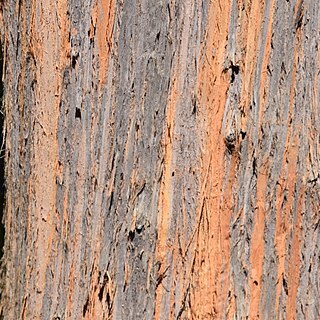Tree usually to 40 m, high sometimes to 90 m. Bark fibrous, grey to brown on lower half of trunk, smooth and white above, usually with insect ‘scribbles’. Juvenile leaves dull-green or glaucous. Adult leaves narrowly to broadly lanceolate, falcate, oblique, green, shining; lateral veins conspicuous, at 15°–35°; intramarginal vein up to 2 mm from margin; petiole flattened or channelled. Umbels 5–27-flowered, but usually 11-flowered; peduncle terete or angular, 9–20 mm long; pedicels 2–7 mm long. Buds clavate; operculum hemispherical, apiculate, c. 2 mm long, 3 mm wide; hypanthium obconical, 3–4 mm long, c. 3 mm wide. Fruits ovoid or pyriform, sometimes hemispherical, 8–19 mm long, 6–11 mm wide; disc descending, sometimes level; valves 3–5, included. Seeds brown. [For more recent description see subspecies profiles-Editor]


